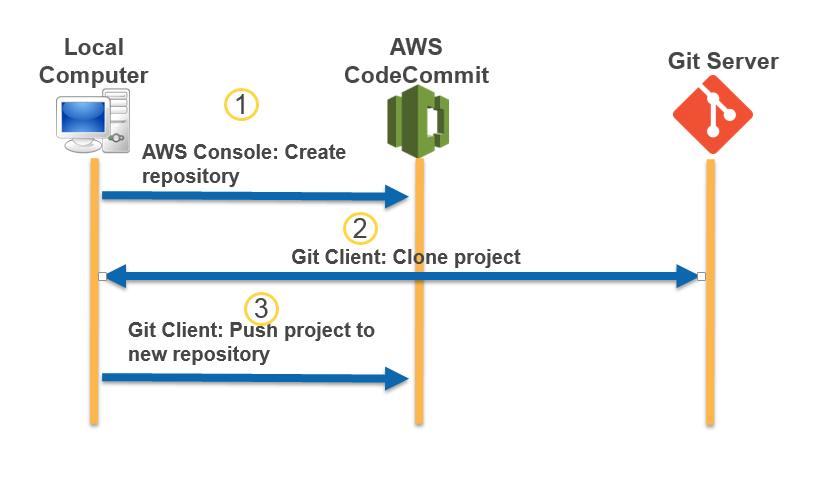What is a repo?
A repository, or repo, is a centralized digital storage that developers use to make and manage changes to an application’s source code. Developers have to store and share folders, text files, and other types of documents when developing software. A repo has features that allow developers to easily track code changes, simultaneously edit files, and efficiently collaborate on the same project from any location.
Why is a repo important?
A repo allows software development teams to implement multiple changes to a software’s program code without compromising the main source code. Instead of applying the changes directly to the main branch, they use features in a repo to edit and review the changes. This reduces merging conflict when two or more developers are editing the same part of the code.
Developers also use repos to introduce new features or bug fixes without affecting the production version of the application. They create a new branch, or copy of the original source code, as a local repository to work on. By doing so, developers ensure that new changes are properly tested before being released to customers.
Benefits of repos for businesses
Businesses are more agile and responsive to evolving consumer demands when they use repos for application development. Developers can work on new features rapidly without affecting the stability of the live application. Repos allow developers to introduce changes and resolve potential issues rapidly. Organizations can also coordinate application development tasks among developers who work remotely.
What is a GitHub repo?
GitHub is a cloud-based repo that allows developers to store and work on project codes in an organized manner. GitHub is built on Git, a versioning control system, and includes additional features that improve collaboration among developers. It provides a graphical UI that makes using the repository functions easier.
GitHub has also become an online open-source community for developers. Developers can connect with peers by joining a discussion, offering help, and contributing their expertise in public projects on GitHub.
As GitHub is the most popular and frequently used repo among developer communities worldwide, this blog post focuses on GitHub repos specifically.
How does a GitHub repo work?
A GitHub repo allows developers to collaborate remotely and distributedly with a locally installed versioning control tool. Developers use a command line interface to implement functions in Git—a version control software.
Git allows developers to create, manage and merge code changes with the main source code.
Create
First, developers create a new repository on the project’s directory that contain code files. Alternatively, they can clone a Git repository from an existing one. The Git repository usually contains a README file, which displays information that describes the project.
Configure
Before making changes to the local repository, developers configure the repo by adding information like user name and email. This allows collaborators to identify the author of a particular Git repo. Then, the developer can make changes to the code and save them with the git commit command.
Change
Developers make changes to the code in their repo. Initially, the changes are stored in their local system only. When ready, they can merge the changes to the central repo. If another developer changes the same file, they can manually review and resolve any conflicts.

What are the key features of a GitHub repo?
GitHub repositories provide developers with centralized code versioning, sharing, and collaboration capabilities with the following features.
Branching
Branching is the process of creating a copy of the repository on GitHub. By default, a GitHub repository has a main branch that contains the original source codes and files that developers initially upload. If they need to modify a particular part of the code, they create a branch that contains a complete copy of code files and label the branch accordingly.
Developers can create several branches from the main repository. For example, developers could create a feature branch to write codes for new software functions and another branch to troubleshoot reported issues.
Commit
Commit is a feature that lets developers save all the changes they’ve made to the code files in the branch. GitHub allows developers, when they commit changes, to describe the new changes they’ve introduced to the code. When developers describe changes, that allows team members to be aware of the changes and the reasons they were made.
Pull request
A pull request sends an official message to other contributors working on the main branch or the branch’s owner to review the committed changes. Fellow contributors can review, comment, or make additional changes to the original commit before submitting it for a merge. When they review a pull request, contributors can see changes to the original code.
Merging
Merging is a GitHub process that applies the committed changes to the main branch. This is done when contributors have reviewed and approved the committed changes. They then invoke the merging request on GitHub, which launches a series of checks before merging the changes to the original code.
What are the types of Git repositories?
Developers can create two types of Git repositories with different permission levels.
Bare repositories
A bare repository contains only the index folder. Developers cannot modify files in a bare repository.
Non-bare repositories
A non-bare repository stores copies of source files that developers can work on and commit changes to.
How does AWS support your repo requirements?
With Amazon Web Services (AWS), AWS CodeCommit is an online code versioning system you can use to host private Git repositories securely. CodeCommit integrates with your existing Git-based tools to form a seamless continuous delivery and continuous integration (CI/CD) pipeline. Here are some ways you can use CodeCommit:
- Secure your code automatically with encryption whether it’s in transit or at rest
- Keep your repositories closer to the AWS environment
- Set up secure and scalable code collaboration workflows on the AWS Cloud
Get started with repos by signing up for an AWS account today.






